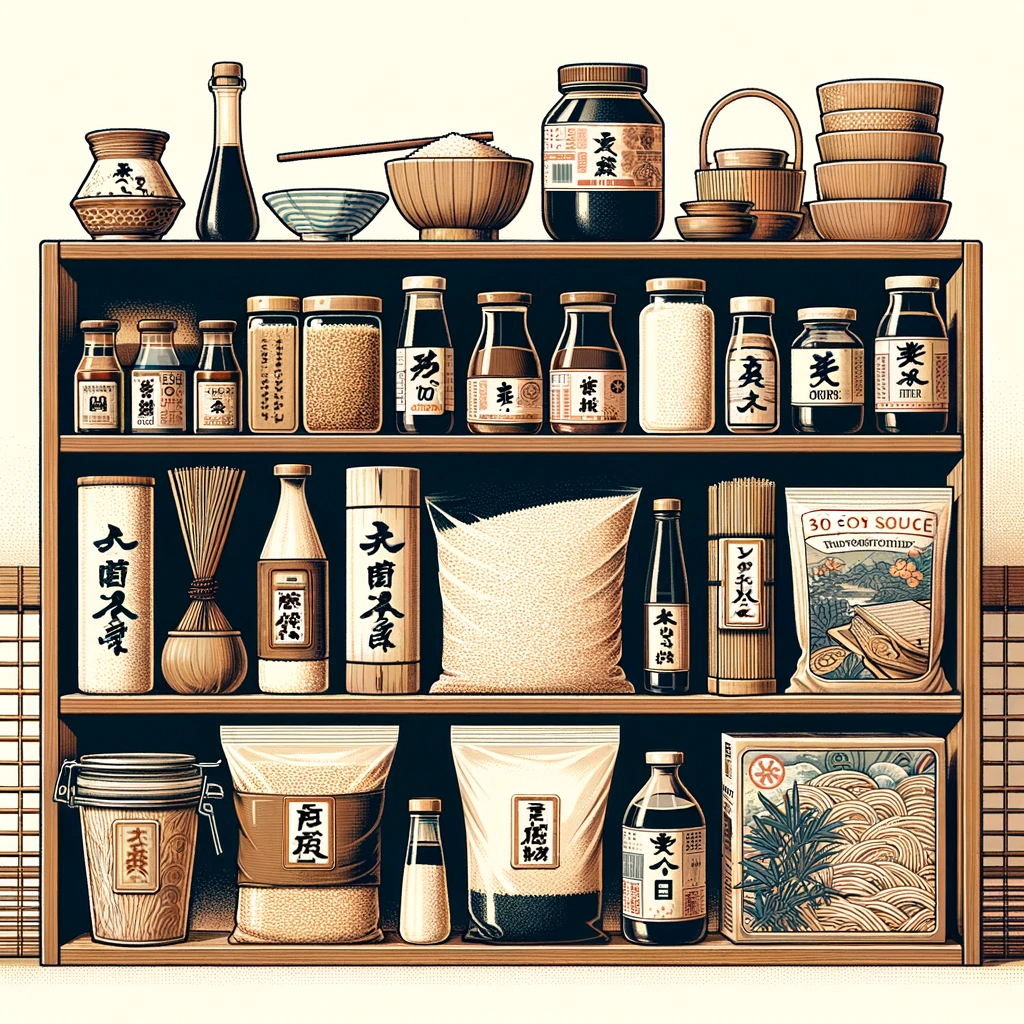When it comes to Japanese cuisine, the harmony of flavors and the subtlety of taste are paramount. But what really underpins these delightful dishes are the essential ingredients stocked in every Japanese kitchen pantry. Let’s explore these pantry staples that are key to authentic Japanese cooking.
1. Soy Sauce (Shoyu)
No Japanese pantry is complete without soy sauce. This versatile condiment, rich in umami, is indispensable in marinades, as a seasoning, and in various sauces. Its salty depth forms the base of many classic Japanese dishes.
2. Rice Vinegar
Milder and sweeter than its western counterparts, rice vinegar is crucial for sushi rice preparation. It’s also commonly used in dressings and marinades, adding a subtle tanginess to dishes.
3. Mirin
This sweet cooking rice wine is a staple in many Japanese kitchens. Mirin imparts a gentle sweetness and sheen to sauces and glazes, balancing the saltiness of soy sauce and miso.
4. Sake
Beyond being a popular beverage, sake is an essential cooking ingredient. It adds a depth of flavor and is often used in marinades to tenderize meats and seafood.
5. Miso Paste
A product of fermented soybeans, miso paste is integral to miso soup. Its applications extend to marinades and dressings, where it lends a complex, savory element.
6. Dashi
This broth, made from kombu (dried kelp) and bonito flakes, is the soul of many Japanese soups and broths. Dashi’s subtle umami backbone is foundational in Japanese cooking.
7. Japanese Rice
The staple of the Japanese diet, short-grain Japanese rice, is distinct in its sticky and moist texture. Perfect for sushi and as a side for most meals, it’s a must-have in any Japanese pantry.
8. Wasabi
This pungent, green paste, known for its fiery kick, is commonly served with sushi and sashimi. Wasabi adds a unique heat that complements the flavors of the fish and rice.
9. Nori (Seaweed Sheets)
Nori sheets are essential for creating sushi rolls and are also used in onigiri (rice balls). They add a crisp texture and a sea-salty flavor to dishes.
10. Pickled Ginger (Gari)
Served as a palate cleanser with sushi, pickled ginger also adds a sweet and tangy flavor profile that enhances the overall dining experience.
Stocking your pantry with these essentials is the first step toward mastering the art of Japanese cooking. Each ingredient plays a crucial role in bringing out the unique flavors and textures that Japanese cuisine is celebrated for. With these staples, you can begin to explore the rich and diverse world of Japanese culinary arts, creating authentic dishes that resonate with the subtlety and harmony characteristic of this exquisite cuisine.
Explore more information about Japanese cooking here.
Also, for additional information about the culinary scene in NEOM visit NeomTaste.com or NeomPoint.com.

Leave a Reply